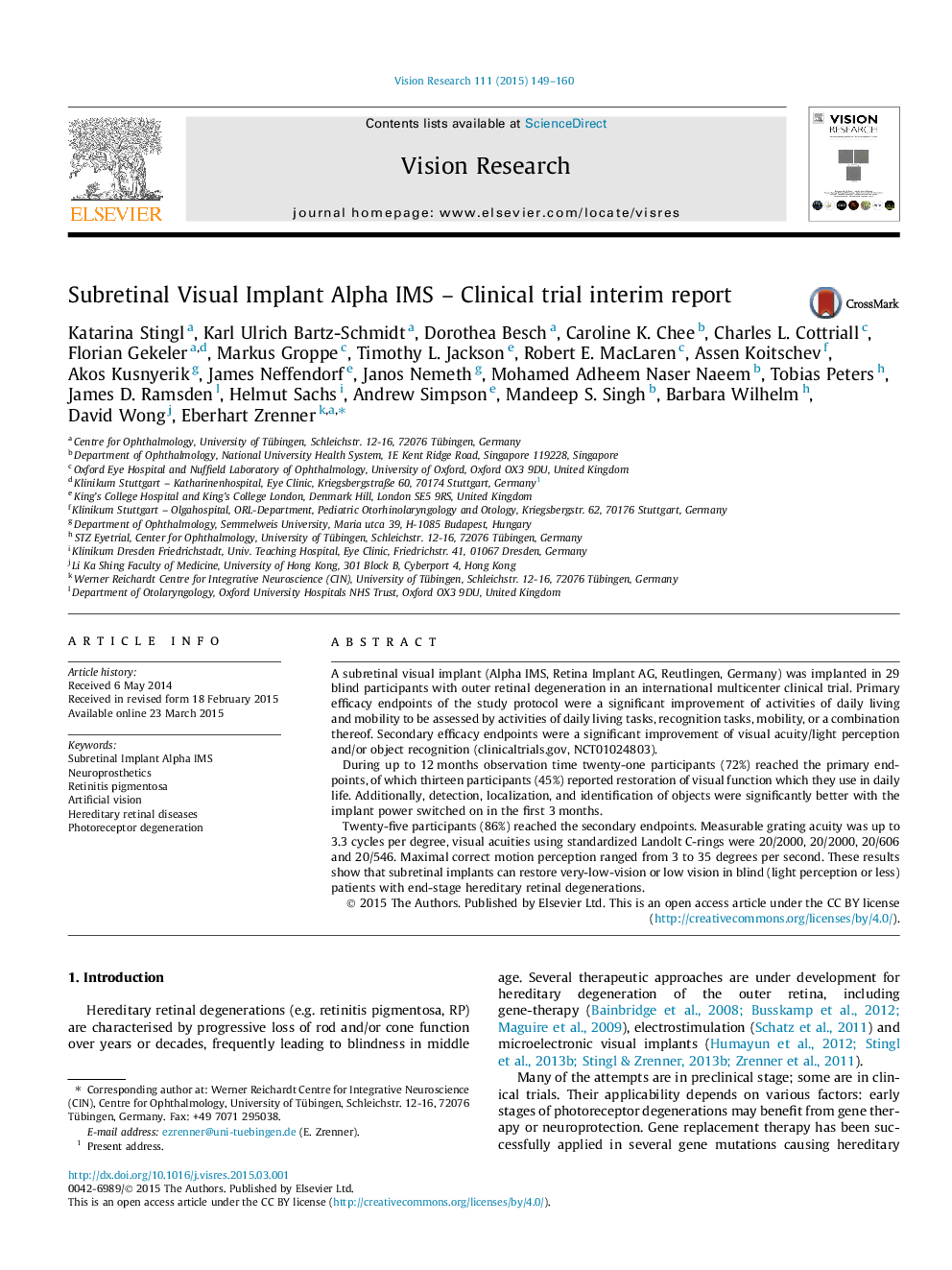| Article ID | Journal | Published Year | Pages | File Type |
|---|---|---|---|---|
| 6203161 | Vision Research | 2015 | 12 Pages |
â¢Retina Implant Alpha IMS was applied in a clinical trial in 29 blind patients.â¢Visual acuity measured with Landolt C-rings reached up to 20/546.â¢Grating acuity reached up to 3.3 cycles per degree.â¢Four patients could read letters with the implant.â¢13 participants (45%) reported useful visual functions in their daily life.
A subretinal visual implant (Alpha IMS, Retina Implant AG, Reutlingen, Germany) was implanted in 29 blind participants with outer retinal degeneration in an international multicenter clinical trial. Primary efficacy endpoints of the study protocol were a significant improvement of activities of daily living and mobility to be assessed by activities of daily living tasks, recognition tasks, mobility, or a combination thereof. Secondary efficacy endpoints were a significant improvement of visual acuity/light perception and/or object recognition (clinicaltrials.gov, NCT01024803).During up to 12Â months observation time twenty-one participants (72%) reached the primary endpoints, of which thirteen participants (45%) reported restoration of visual function which they use in daily life. Additionally, detection, localization, and identification of objects were significantly better with the implant power switched on in the first 3Â months.Twenty-five participants (86%) reached the secondary endpoints. Measurable grating acuity was up to 3.3 cycles per degree, visual acuities using standardized Landolt C-rings were 20/2000, 20/2000, 20/606 and 20/546. Maximal correct motion perception ranged from 3 to 35 degrees per second. These results show that subretinal implants can restore very-low-vision or low vision in blind (light perception or less) patients with end-stage hereditary retinal degenerations.
